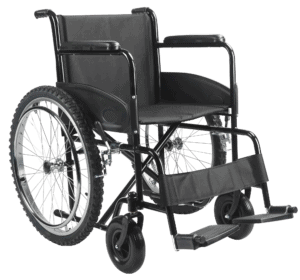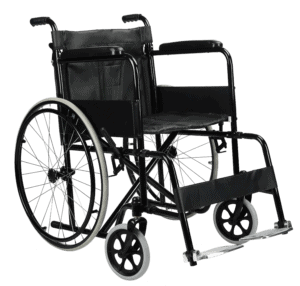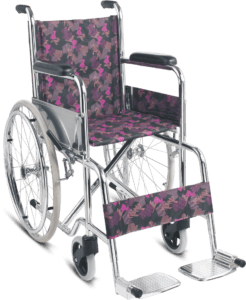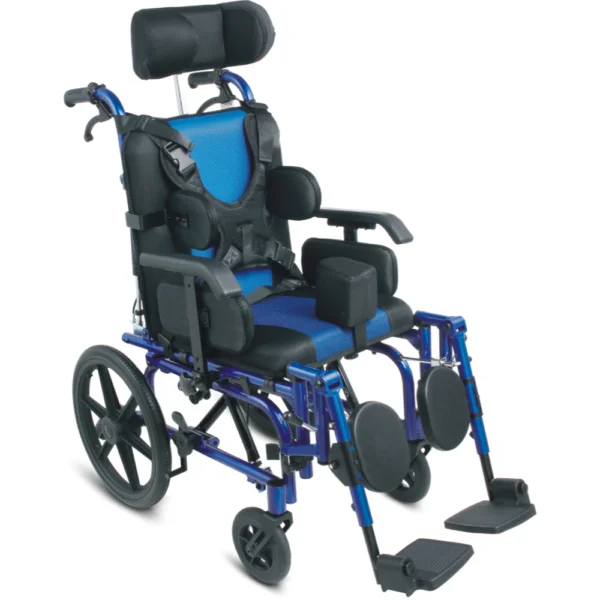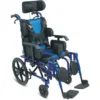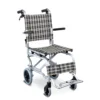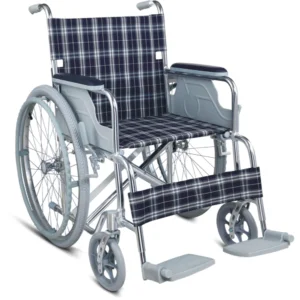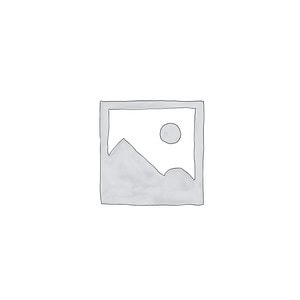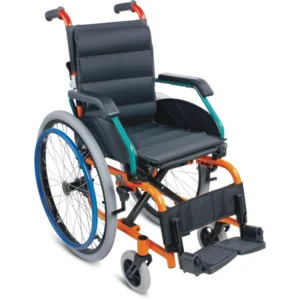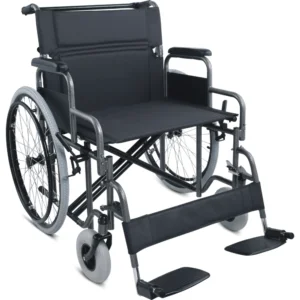Yeekong’s Manual Cerebral Palsy Wheelchair EK958L,with Reclining Back and Adjustable Headrest, Detachable Armrest and Footreest, Solid Wheels, Adjustable Seat Angle, Safety Belt.
Product detail:
Overall length: 104cm
Overall width: 53cm
Total height: 97-114cm
Folded width: 34cm
Seat width: 38cm
Seat depth: 36cm
The height of the seat from the ground: 49cm
Height from footplate to floor: Adjustable
Backrest height :450mm
Castor diameter: 150mm
Rear wheel diameter: 380mm
Max load: 75kg
Net weight: 20.8kg
Frame: The cerebral Palsy Wheelchair constructed from high-strength aluminum alloy with adjustable armrests, detachable footrests,. Equipped with four sets of specialized oil and gas mixed springs, allowing the seat to tilt up to 45° and the backrest to recline to 180°.
Front Wheels: 6-inch plastic wheel hubs with high-quality solid rubber tires.
Rear Wheels: 16-inch plastic wheel hubs with PU tires.
Brakes: Aluminum alloy manual parking brake.
Seat Cushion: Upholstered in high-quality Oxford fabric, with a high-rebound sponge core.
Armrests: Features detachable and height-adjustable PU armrest pads.
Side Panels: Plastic side panels with adjustable spacing, suitable for children of different ages and sizes.
Footrests: Features an adjustable and detachable structure with an adjustable footplate height. The footplate is length-adjustable, elevatable, and includes a leg rest. It can be raised to a position where the user can lie flat, with a gravity self-locking safety device.
Headrest: Adjustable opening angle and height.
Shoulder Pads: High-strength metal shoulder pad framework with stepless adjustment of the distance between left and right shoulder pads. The height has two levels of adjustment within the range of 300 to 330mm.
Leg Pads: The seat cushion is equipped with a leg pad, including a high-strength metal limit pad framework with adjustable front and rear positions.
Safety Belts: Cerebral Palsy Wheelchair includes a butterfly-shaped spinal posture correction safety belt and an adjustable pelvic posture correction safety belt for the seat. Additional reinforced protective devices can be configured according to user needs.
Guidelines:
Before riding, carefully check if the tires are damaged and ensure the braking system is functioning properly.
Prior to boarding the wheelchair, engage the handbrake to secure the wheelchair and prevent it from moving.
When crossing thresholds or steps, the caregiver should use their foot to step on the footrest bar beneath the seat, lifting the front wheels of the wheelchair until they clear the obstacle, then lowering them.
When descending slopes or steps, let the wheelchair’s rear wheels go first, with the caregiver walking backward to prevent the patient from falling out.

